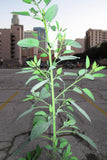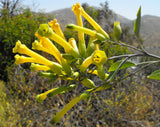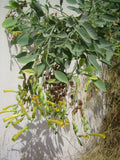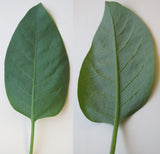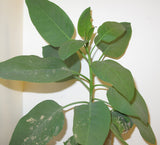Nicotiana glauca, commonly known as tree tobacco, is a woody tree-like perennial in the nightshade family, Solinaceae. N, glauca is native to South America but is widespread in other continents. This species has been known to grow up to 20 feet tall but typically grows up to 7 feet. The plant has a thick rubbery blue-green epidermis with up to 7 inch long leaves. The leaves are simple and alternate arranged along the stem. Nicotiana glauca typically flowers from late spring to early fall with long tubular bell shaped flowers that are bright yellow. Nicotiana glauca may be grown as a medicinal plant but should be used extremely cautiously. Native American groups use this species interchangeably with other nicotiana species but use this plant in much lower quantities as it is more toxic than other species. Nicotiana glauca is a drought tolerant plant that thrives in full sun conditions while sitting in well draining soil. Water the plant adequately when soil appears dry allowing the soil to dry out slightly in between waterings. USDA plant hardiness zone 8a to 11b.
Nicotiana glauca seeds benefit from a cold stratification pretreatment to germinate more reliably. This may be achieved by leaving seeds in a small amount of moist, but not soaking wet, sterilized peat moss, vermiculite, or sand inside a refrigerator for 2 to 4 weeks. After this period, place the seeds directly on the surface of a well draining potting mix and sprinkle just enough of the potting mix to cover the seeds, being careful not to plant too deep. Sown seeds require consistent moisture and humidity, but the soil should not remain soaking wet. Soil should be moist and well-draining, and kept between 70°F to 80°F for best results. Germination typically takes 1 to 2 weeks to occur. Even with optimal conditions, germination may be slow and sporadic.







